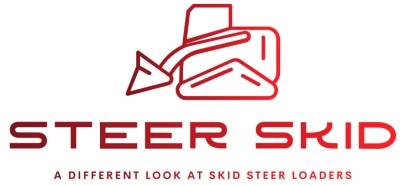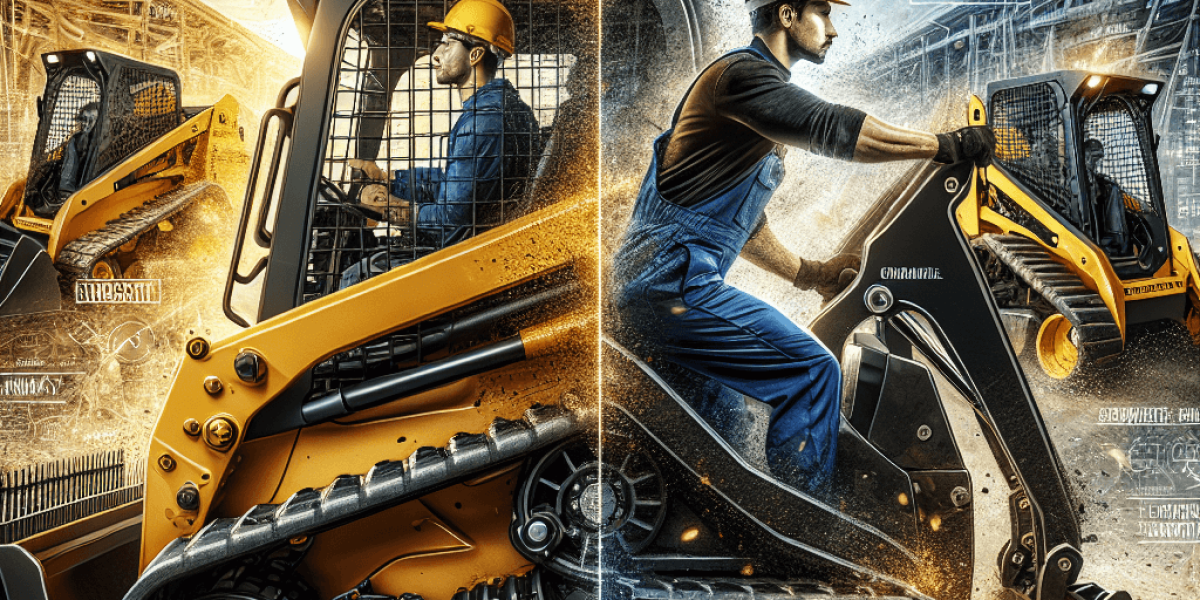Introduction
Dependability and quality are critical in the fast-paced world of construction and landscaping. Partnering with a reputable heavy machinery expert offers improved performance and safety, allowing your projects to reach outstanding results. The proper equipment can make all the difference. Skid steers and compact track loaders (CTLs) are two of the most flexible and commonly utilized devices in these industries. Each has its own set of advantages and applications, but deciding which one is best for you might be difficult.
This tutorial seeks to clarify the distinctions between Compact Track Loaders and skid steers, allowing you to make an informed decision. Whether you’re a construction professional, gardener, or equipment enthusiast, understanding the subtleties of these machines will help you improve your operations and obtain superior job site results.
Key Differences Between Compact Track Loaders and Skid Steers

Compact Track Loaders vs. Skid Steers
Mobility and Terrain
Compact track loaders are designed with tracks rather than wheels, making them ideal for soft, uneven, and muddy terrain. The tracks distribute the machine’s weight more evenly, allowing it to glide over obstacles that wheeled equipment may struggle with. This makes CTLs ideal for operations in moist conditions like marshy landscapes or building sites with loose soil.
Skid steers, on the other hand, have wheels and function best on hard, flat surfaces such as concrete and asphalt. Their wheeled shape allows for nimble handling and quick direction changes, making them excellent for activities requiring a high degree of agility. Skid steers excel in urban construction projects where space is limited and accuracy is required.
Weight Distribution
One of the distinguishing characteristics of Compact Track Loaders is their low ground pressure. Because their tracks distribute the machine’s weight across a broader area, CTLs put less pressure on the ground, lowering the danger of injuring sensitive surfaces. This feature is especially useful when working on lawns, gardens, and other delicate settings.
Skid steers, on the other hand, have increased ground pressure due to their wheeled shape. This leads in a more compact weight distribution, which improves their capacity to work in tight locations. Skid steers are popular among contractors who need to conduct activities such as demolition or debris removal in tight spaces because to their compact design.
Cost Considerations
When analyzing cost factors, it is critical to consider both the initial purchase price and continuing maintenance charges. CTLs often have a larger upfront cost than skid steers. This price discrepancy is due in part to the complexity of their track system and the technologies used.
However, maintenance and operational costs may differ based on usage and application. CTLs may require more frequent maintenance owing to track wear and tear, especially if used extensively on abrasive surfaces. Skid steers, with its simpler wheeled arrangement, often require less maintenance, but can incur more expenditures when utilized on uneven terrain.
Applications and Use Cases
When to Choose a Compact Track Loader
Compact track loaders excel in applications where the ground conditions are less than optimal. They are ideal for landscaping projects including grading, trenching, and preparing soft ground for planting. CTLs are also a popular choice for excavation and earthmoving projects because of their stability on uneven ground, ensuring safety and efficiency.
CTLs provide unparalleled versatility to construction professionals working in places prone to rain or with rapidly changing weather conditions. Their ability to navigate muddy terrain without being bogged down makes them an invaluable asset in tough circumstances.
When to Choose a Skid Steer
Skid steers are the workhorses of the construction industry, excelling at tasks requiring agility and swift maneuvering. They are widely employed in construction and demolition operations, where their ability to pivot in place and reach tight corners is extremely useful.
Skid steers are also used for jobs such as material handling, loading, and backfilling. Their small size helps them to function efficiently in urban situations, making them a must-have for contractors who require a dependable machine to complete a variety of tasks in tight locations.
Performance and Power
Engine Power and Hydraulic Performance
When comparing compact track loaders and skid steers, engine power and hydraulic performance are crucial aspects that have a large impact on overall capabilities. Compact track loaders often have more powerful engines capable of handling greater loads and more demanding duties. This extra power is useful in applications such as large-scale excavation projects, where strength is required to move large amounts of material efficiently. CTLs are frequently equipped with modern hydraulic systems that give significant lifting capabilities, which improves their performance in tough conditions.
Skid steers, on the other hand, have significantly less engine power than CTLs but are well-known for their quick response times and efficiency. Skid steer hydraulic systems are designed to be versatile, allowing for quick attachment changes and the capacity to execute a variety of jobs ranging from lifting to excavating. Their power-to-weight ratio allows them to be agile in fast-paced projects that need precision and reactivity, making them ideal for smaller-scale chores and urban building.
Operator Comfort and Visibility
Another important factor to consider when deciding between compact track loaders and skid steers is operator comfort and visibility. CTLs frequently have roomy cabs with ergonomic controls meant to reduce operator fatigue during extended operation. The shape of a CTL cab’s tracks often improves visibility, allowing operators to see more of their surroundings, which is very useful in complex work areas.
Skid steers, while compact, prioritize operator comfort by providing straightforward controls and visibility options required for high-performance operations. Many skid steer models include enclosed cabs with climate control, which improves the entire working experience. The design of these machines allows for unobstructed sightlines to front attachments, allowing operators to maneuver in confined locations while retaining control.
Pros and Cons
Pros and Cons of Compact Track Loaders
Pros
- Ideal for soft and uneven terrains
- Lower ground pressure protects sensitive surfaces
- Excellent stability and traction
Cons
- Higher initial purchase cost
- Increased maintenance for tracks
- Less efficient on hard surfaces
Pros and Cons of Skid Steers
Pros
- Superior maneuverability and agility
- Lower upfront cost compared to CTLs
- Versatile for various construction tasks
Cons
- Higher ground pressure can damage soft surfaces
- Limited performance on wet or muddy terrain
- Requires caution on uneven ground
Conclusion
In the end, the choice between compact track loaders and skid steers comes down to your unique demands and project specifications. CTLs provide outstanding performance in soft and difficult terrains, making them an invaluable asset for landscaping and earthmoving projects. In contrast, skid steers offer the agility and versatility required for urban construction and demolition projects.
By analyzing the benefits and cons indicated in this book, you can make an informed decision that is consistent with your operational objectives. For those considering adding new equipment to their fleet, looking into alternatives from Typhon Machinery or researching the largest compact track loader models available will help you make an informed selection.
Remember that the correct equipment may increase your production and efficiency, keeping you ahead in the competitive world of construction and landscaping. Consider your geography, project scope, and budget when deciding whether a small track loader or skid steer is the best fit for your business needs.

